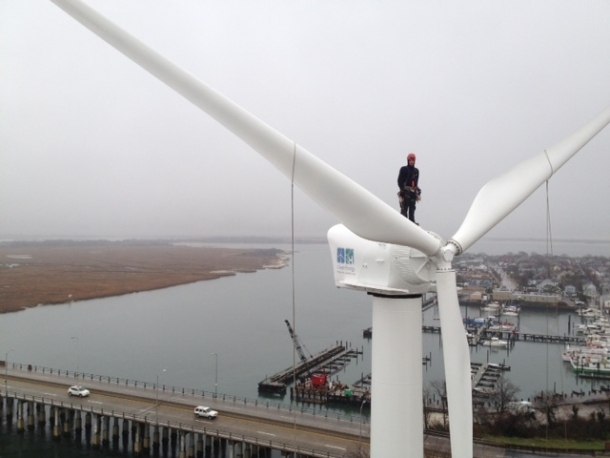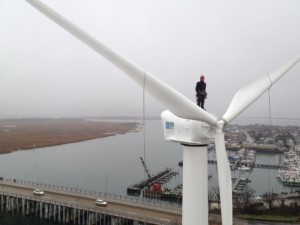By building a wind turbine to power a hydrogen production and fueling station, a little hamlet in Long Island is positioning itself as the bellwether for carbon-neutral transportation.
The town of Hempstead, New York on Long Island erected a 121 foot tall turbine last December on the township’s Department of Conservation and Waterways land to take advantage of powerful Atlantic winds and power the hydrogen and natural gas fueling station it built in 2009. The turbine can generate up to 180 megawatts of power per year, and presents an estimated hydrogen fuel and energy cost savings of $40,000 per year.

For the moment the hydrogen-powered vehicle fleet consists of two Toyota FCHV fuel cell Highlanders and a hydrogen/gas powered bus. However, the township is working with other unnamed manufacturers of fuel cell vehicles to expand its fleet. Being the only wind-powered hydrogen production and fueling station in the New York metro area will make it an attractive testing ground for the nascent hydrogen car market, which is expected to grow in 2015 when manufacturers introduce production vehicles to consumers. Until then, any excess energy generated by the wind turbine that doesn’t get used creating hydrogen will be fed into the Long Island Power Authority grid, lowering all residents’ carbon footprint.
Figuring out an inexpensive and carbon-neutral way to produce an abundant amount of hydrogen will be key to the success of fuel cell vehicles. Solar hydrogen fueling stations have been introduced on both U.S. coasts over the past couple years, but haven’t gained traction due to the high costs of production and low demand.
Not that wind-powered hydrogen filling stations are cheap.
The turbine cost $615,000, paid from a $4.6 million United States Department of Energy grant that provides funding for a range of clean energy projects. The hydrogen and natural gas fueling station cost $2.2 million to construct.
The hydrogen production station could also be a clever way to leverage underutilized wind power at night when energy demand is low. Expensive batteries are the current proposed solution to store excess clean energy, but turning it into clean fuel could be a cheaper and smarter way to go.

 Follow
Follow